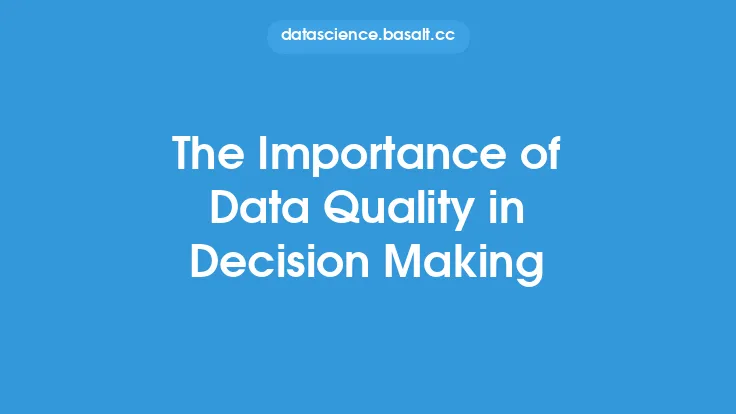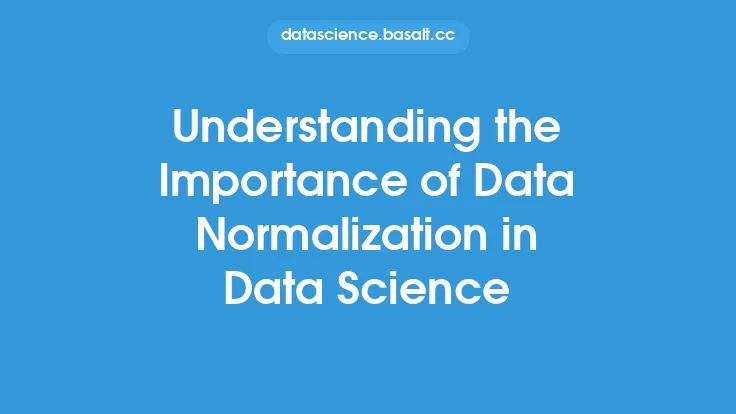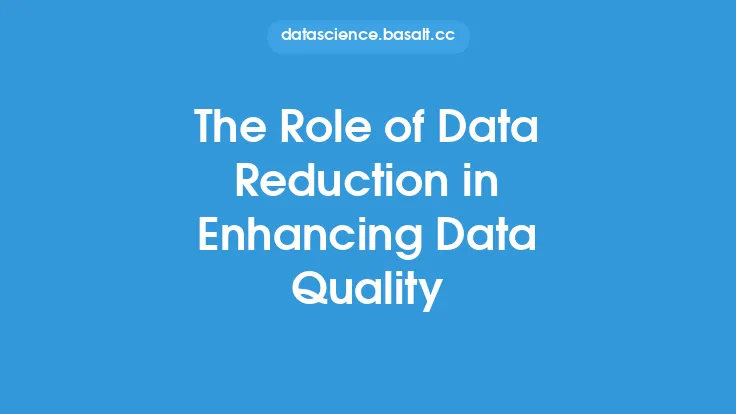Data quality is a critical aspect of data preprocessing, as it directly affects the accuracy and reliability of the insights and models generated from the data. High-quality data is essential for making informed decisions, identifying patterns, and uncovering hidden relationships within the data. In this article, we will delve into the importance of data quality in data preprocessing, exploring its significance, challenges, and best practices for ensuring high-quality data.
What is Data Quality?
Data quality refers to the degree to which data is accurate, complete, consistent, and reliable. It encompasses various aspects, including data accuracy, completeness, consistency, and timeliness. High-quality data is free from errors, inconsistencies, and inaccuracies, making it suitable for analysis and modeling. Data quality is not a one-time achievement but a continuous process that requires ongoing monitoring and maintenance.
The Impact of Poor Data Quality
Poor data quality can have severe consequences on the entire data mining process. It can lead to inaccurate insights, flawed models, and misguided decisions. Some of the common problems associated with poor data quality include:
- Inaccurate or incomplete data, which can result in biased models and incorrect predictions
- Inconsistent data, which can lead to incorrect conclusions and recommendations
- Noisy or erroneous data, which can negatively impact model performance and accuracy
- Inadequate data, which can limit the scope and depth of analysis
Challenges in Ensuring Data Quality
Ensuring data quality is a challenging task, especially when dealing with large and complex datasets. Some of the common challenges include:
- Data volume and velocity: The sheer volume and speed of data generation can make it difficult to ensure data quality
- Data variety: The diversity of data sources, formats, and structures can create challenges in integrating and processing data
- Data complexity: The complexity of data relationships and dependencies can make it difficult to identify and correct errors
- Human error: Human mistakes and biases can introduce errors and inaccuracies into the data
Best Practices for Ensuring Data Quality
To ensure high-quality data, several best practices can be employed:
- Data validation: Validate data against predefined rules and constraints to detect errors and inconsistencies
- Data normalization: Normalize data to ensure consistency and comparability across different datasets and sources
- Data cleansing: Cleanse data to remove errors, duplicates, and inconsistencies
- Data transformation: Transform data into suitable formats for analysis and modeling
- Data monitoring: Continuously monitor data quality and perform regular audits to detect and correct errors
Data Quality Metrics
To measure data quality, various metrics can be used, including:
- Accuracy: Measures the degree to which data is correct and free from errors
- Completeness: Measures the degree to which data is comprehensive and complete
- Consistency: Measures the degree to which data is consistent and free from inconsistencies
- Timeliness: Measures the degree to which data is up-to-date and relevant
- Coverage: Measures the degree to which data covers the required scope and depth
Data Quality Tools and Techniques
Several tools and techniques are available to support data quality efforts, including:
- Data profiling: Analyzes data to identify patterns, relationships, and anomalies
- Data quality software: Automates data quality processes, such as data validation, cleansing, and normalization
- Data governance: Establishes policies, procedures, and standards for data management and quality
- Data certification: Certifies data as accurate, complete, and reliable
Conclusion
Data quality is a critical aspect of data preprocessing, and its importance cannot be overstated. Ensuring high-quality data requires ongoing effort and attention, as well as the use of best practices, metrics, and tools. By prioritizing data quality, organizations can ensure that their data is accurate, reliable, and suitable for analysis and modeling, ultimately leading to better decision-making and business outcomes.





